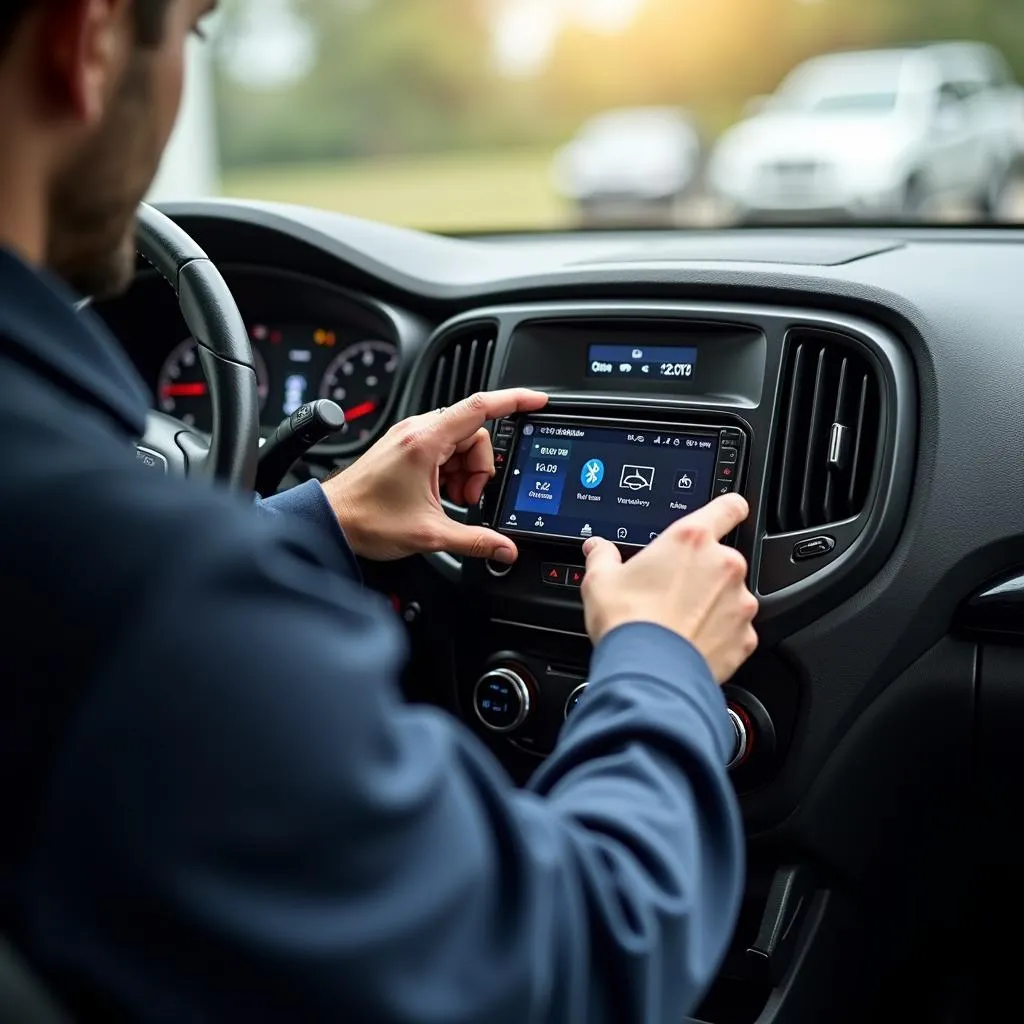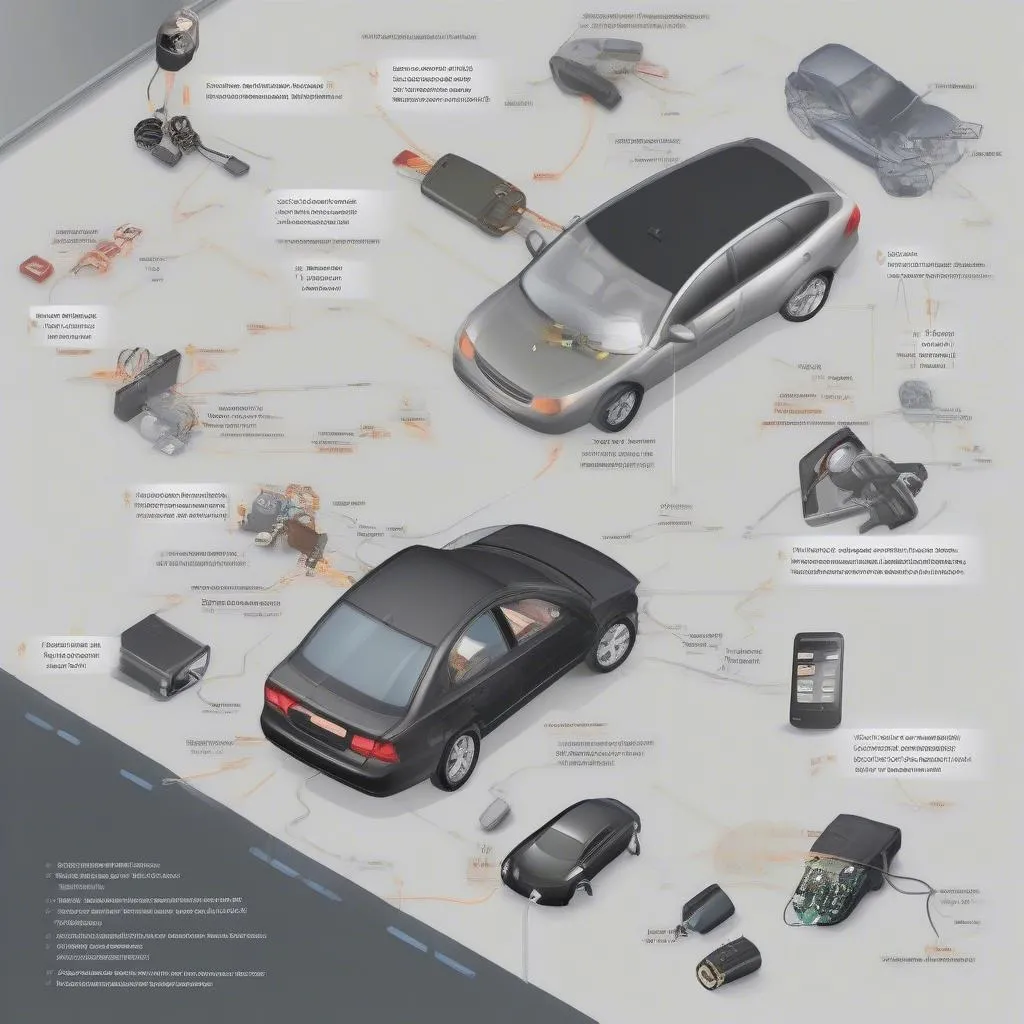A car battery is the heart of your vehicle’s electrical system, responsible for starting the engine and powering various electrical components. Understanding the concept of “maximum current draw” from your car battery is crucial to avoid unexpected breakdowns and ensure its longevity. This article delves into the intricacies of maximum current draw, its implications, and how to diagnose and address related issues.
What is Maximum Current Draw?
In simple terms, maximum current draw refers to the highest amount of electrical current your car battery can deliver to a circuit at any given time. This draw is typically at its peak when starting the engine, as the starter motor demands a significant surge of power.
Every car battery is designed with a specific maximum current draw capacity, often measured in Cold Cranking Amps (CCA) or Ampere-hours (Ah). CCA measures the battery’s ability to start an engine in cold weather, while Ah indicates the total amount of current a battery can supply for one hour.
Why is Maximum Current Draw Important?
Exceeding the maximum current draw limit of your car battery can lead to several issues, including:
- Dimming or flickering lights: When the electrical system is overloaded, lights may dim or flicker, especially when starting the engine or using power-hungry devices.
- Slow engine crank: If the battery struggles to deliver enough current, the engine may crank slowly or fail to start altogether.
- Overheating battery: Excessive current draw generates heat, potentially leading to battery overheating, damage, and reduced lifespan.
- Damage to electrical components: Drawing too much current can strain and damage sensitive electrical components within the vehicle.
Common Causes of High Current Draw
Several factors can contribute to high current draw on your car battery:
- Faulty starter motor: A worn-out or malfunctioning starter motor can draw excessive current, putting a strain on the battery.
- Failing alternator: The alternator is responsible for recharging the battery while driving. A failing alternator can lead to an undercharged battery, causing it to overwork and draw more current.
- Parasitic drain: Maximum parasitic draw occurs when electrical components continue to draw power even when the vehicle is turned off. This can be due to faulty wiring, malfunctioning modules, or leaving accessories plugged in.
- Age and condition of the battery: As batteries age, their internal resistance increases, reducing their ability to deliver high currents efficiently.
Diagnosing Maximum Current Draw Issues
Identifying the root cause of excessive current draw often requires specialized equipment and expertise. Here are some steps involved in diagnosing such problems:
- Visual Inspection: Begin with a visual inspection of the battery for any signs of physical damage, corrosion, or loose connections.
- Battery Testing: Test the battery’s voltage and CCA rating using a multimeter or a dedicated battery tester to determine its overall health and capacity.
- Parasitic Draw Test: This test involves measuring the current draw with the engine off to identify any abnormal drain on the battery.
- Starting System Test: This test evaluates the performance of the starter motor and its components to pinpoint any issues contributing to high current draw.
Addressing Maximum Current Draw Problems
Once the cause of high current draw is identified, addressing it promptly is crucial to prevent further damage. Here are some common solutions:
- Jump-starting the vehicle: If the battery is drained due to a temporary issue, jump-starting can provide a temporary solution.
- Charging the battery: A low-charged battery can be recharged using a dedicated battery charger.
- Replacing the battery: If the battery is old, damaged, or unable to hold a charge, replacement is often necessary.
- Repairing or replacing faulty components: Addressing issues with the starter motor, alternator, or other electrical components is essential to resolve underlying causes.
Expert Insights
“Many car owners underestimate the importance of understanding their vehicle’s electrical system,” says John Miller, a seasoned automotive electrician with over 20 years of experience. “Knowing your battery’s maximum current draw limitations and recognizing the signs of potential problems can save you from unexpected breakdowns and costly repairs in the long run.”
Conclusion
The maximum current draw of your car battery is a crucial aspect of your vehicle’s electrical system. Understanding its significance, common causes of high current draw, and how to diagnose and address related problems is vital for maintaining your vehicle’s health and ensuring its longevity. If you suspect any issues related to your car battery’s performance, seeking professional assistance from a qualified automotive electrician is always recommended.


